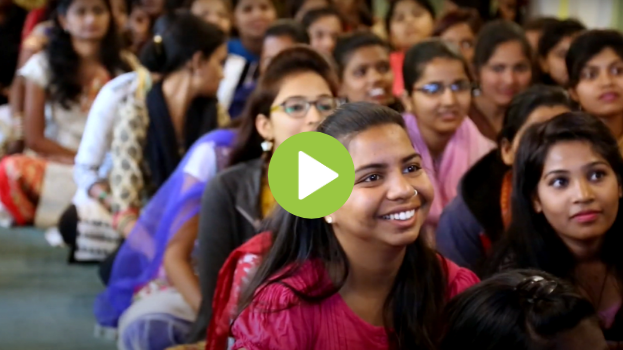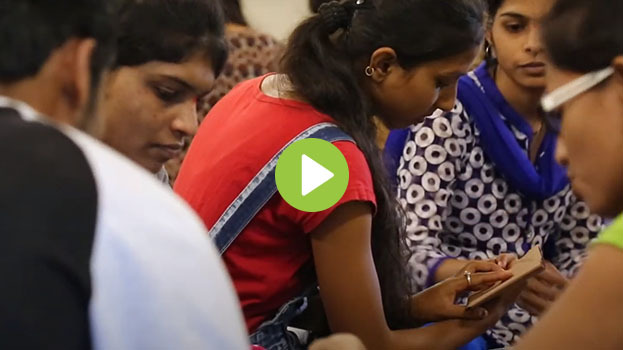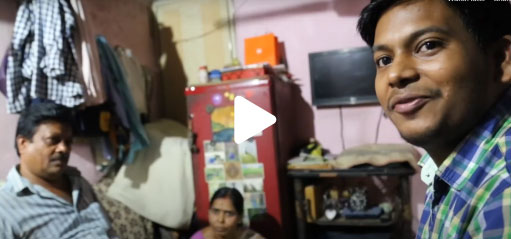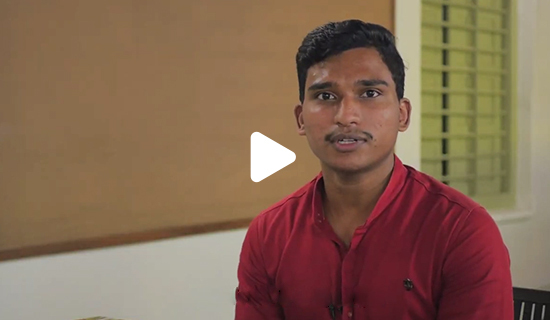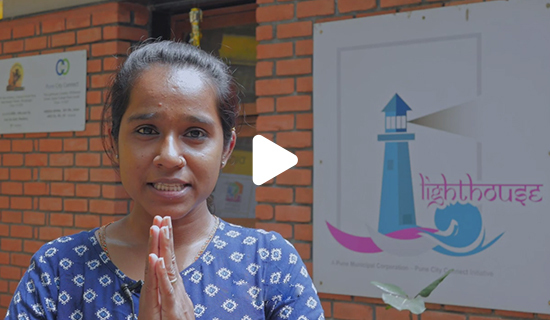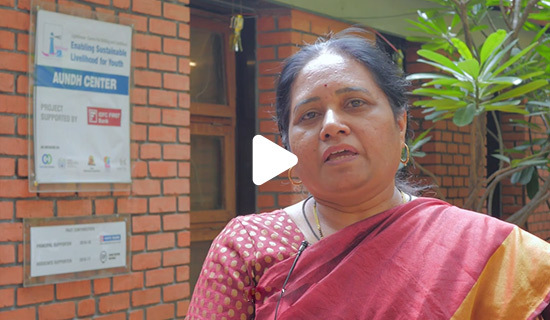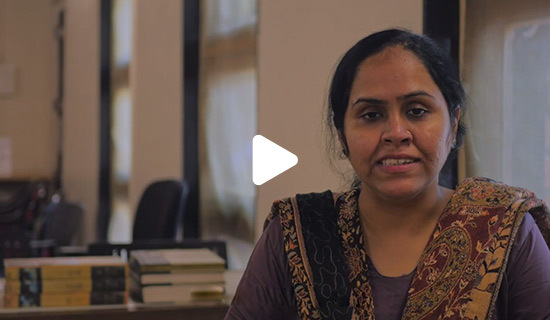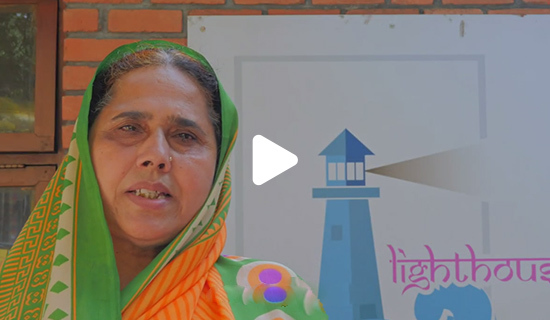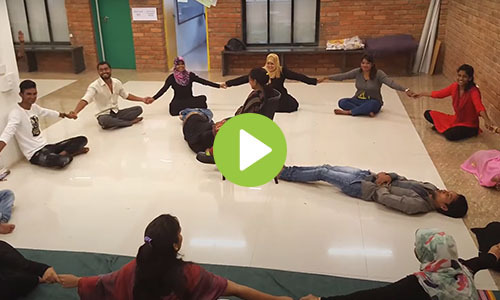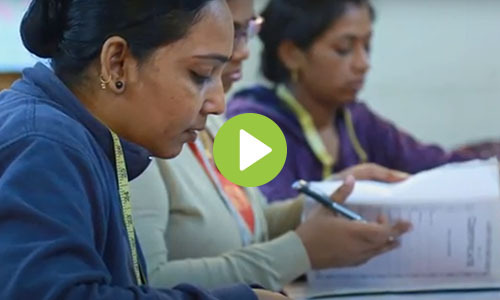Lighthouse: Centre for Skilling and Livelihood
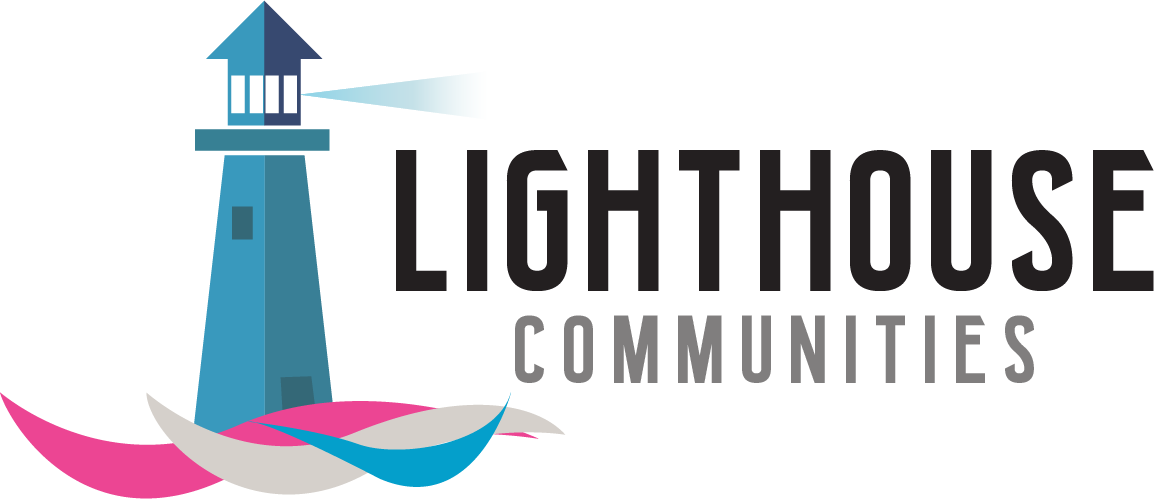
What is the Lighthouse Program?
The ‘Lighthouse: Centre for Skilling and Livelihood’ is a sustainable livelihood program for urban disadvantaged youth. The Lighthouse fosters agency, workplace competencies and skills in youth, thus enabling social and economic transformation for themselves and in their communities. The underlying belief is that of ‘full potential’ of individuals and the Lighthouse supports each individual in discovering this path and taking the next step towards fulfilling their potential.
Pune Municipal Corporation and Pune City Connect launched the first Lighthouse on 25th June 2016, in collaboration with the Smart City Mission. Today, 7 Lighthouses are operational, with a plan to start another 8, such that there is one Lighthouse in each administrative ward of Pune.
Lighthouses
Across India
Slum Communities
Have access and enrolled
Youth
Enrolled till date
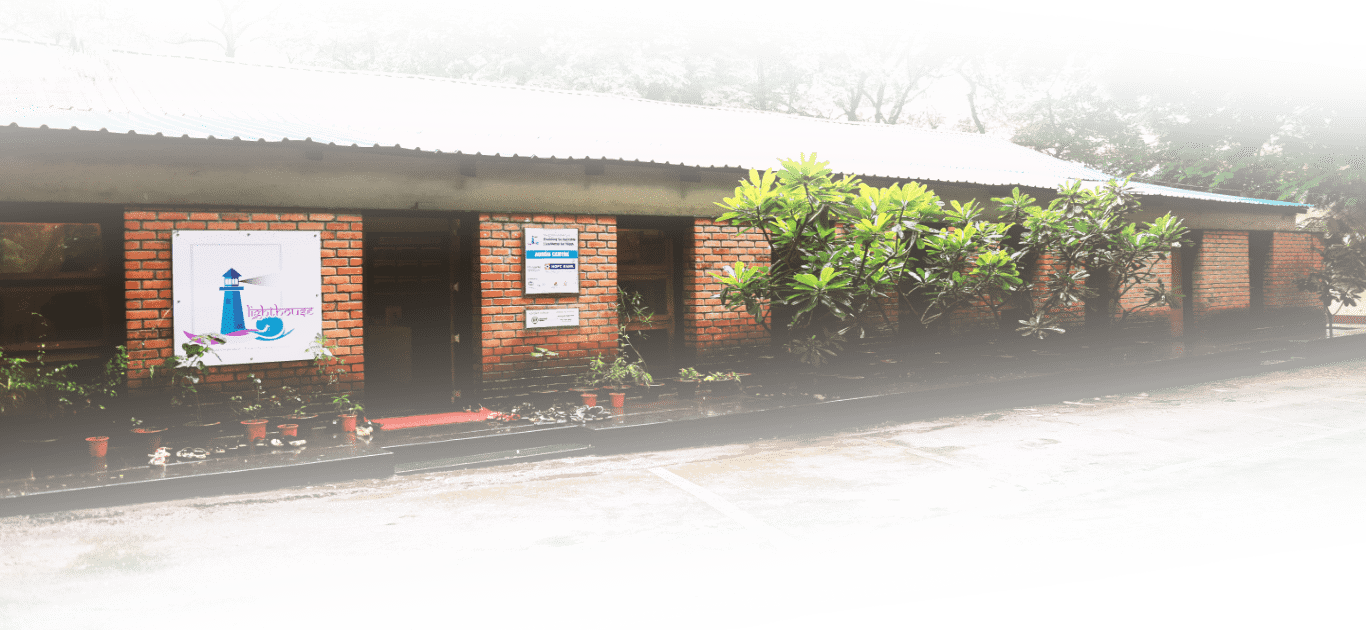
Lighthouses
Across Pune city
Slum Communities
Have access and enrolled
Youth
Enrolled till date
Our Mission
1 million youth with agency and sustained livelihood opportunities. 1000 communities demonstrating socio-economic transformation.
The Lighthouse Model
Throughout a young person’s association with the Lighthouse, he/she is offered one-to-one support to carve out a career filled with joy and confidence. The different stages of the program are elaborated below and also brought alive through students’ stories.

The first step of the program is to reach out to youth and low-income communities. Home visits, relationship building with community leaders and working with Lighthouse alumni, are some outreach strategies. In addition, local Corporators promote the Lighthouse concept within their constituencies and PMC social workers support in spreading awareness in communities. Over 76% enrollments at the Lighthouse happen through references provided by Lighthouse alumni.
20% inflexion point The Lighthouse program has a strategy of enrolling over 20% households from each slum community because the belief is that 20% household penetration constitutes an inflection point for the culture, sense of possibility and ‘agency’ of the entire community to change. Accordingly, enrolment, skilling and placement statistics are tracked for every slum community.
We work with some of the most marginalized youth
59%
enrolments are women
ZERO
educational qualifications for entering the Lighthouse
81%
students are school dropouts/ 10th Pass/ 12th Pass
73%
of placed youth have never worked before
100%
youth are from low-income households and 60% live in slums/chawls/ villages
Once enrolled, students start with Rhythm- a program designed to awaken youths’ inner ‘Agency’ by creating a safe space that respects the unique context and strengths of each youth. The concept of having ‘Agency’ within oneself refers to the capacity of an individual to determine his/her future. Through the interplay of creative exercises, mindfulness practices, group challenges and learning from successful individuals; the Lighthouse youth start to see themselves in a new light.
The two key aspects of the Counselling process are- a deep belief in a young person’s potential and ‘freedom of choice’.
The objective of career counselling at the Lighthouse is to help each young person find her/ his path to full potential. Having moved each student from a place of choicelessness to one of possibility through the Foundation Course, it would not make sense to offer limited options for vocational skilling. Rather, youth are encouraged to decide on the vocational skill of their choice.
Each student is equipped with three kinds of information in order to make this decision: an analysis of their aspirations and interest, an aptitude assessment, and market trends. This is done through 1-1 counselling sessions in which the student determines the meeting point of her/ his aspirations, talent and market reality.
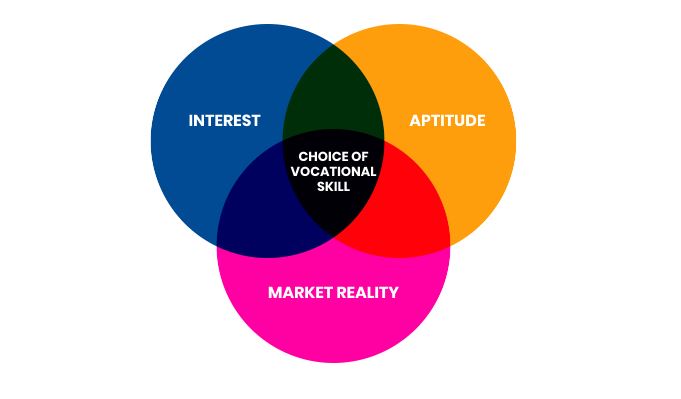
Choice of Career for each youth is at the intersection of Interest, Aptitude and Market Reality
This program is towards building workplace competencies through a conversational English curriculum and Digital Empowerment curriculum: A conversational English course that is a key workplace competency. The spoken English program is run in partnership with ‘Bindaas Bol’ to improve not only conversational skills in English but other soft skills required at the workplace.
A 20 hours digital empowerment curriculum that prepares youth with basic internet skills thereby enhancing their employability. Inhouse Digital facilitator will be engaged to deliver the online Digital Empowerment curriculum. The course enables youth to be internet savvy and have the necessary digital skills to confidently enter a work place.
Being a collective action program, the Lighthouse has entered into partnerships with vocational skilling partners across the city, thus enabling wide choice. Till date, over 55 skilling courses have been held in partnership with 20+ skilling partners.
The Lighthouse team continues being in touch with students after they start their vocational skilling program. Attendance is tracked, as well as program quality. If and where required, conversations are held with the youth, their family or the skilling partner.
Skilling courses which are in high demand such as data entry/ accounting/ office administration/ fashion designing or beautician are held within the precincts of the Lighthouse. Other courses which have only a few students enrolling per batch are held at the location of the skilling partner.
Our 20+ skilling ecosystem partners
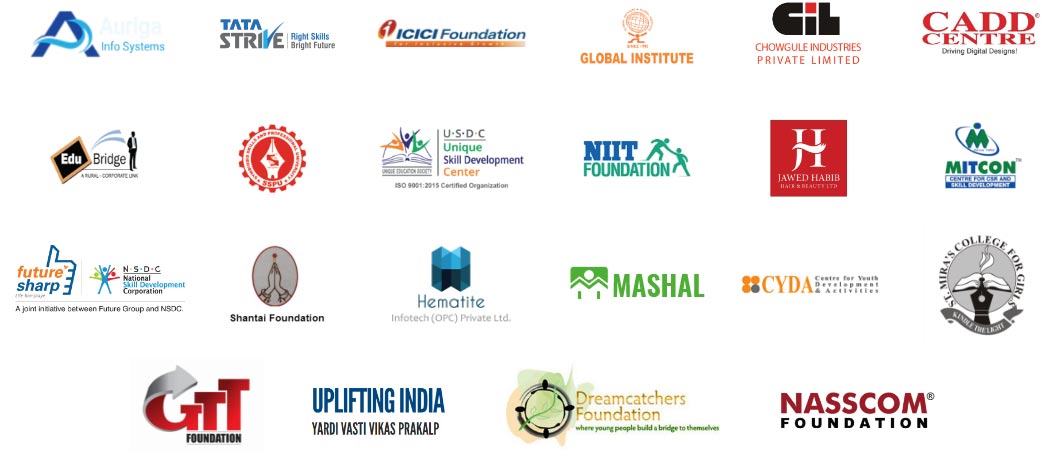
Pre-placement coaching, CV making, mock interviews and personal support during the entire interview process are important components of this stage. Family counselling is undertaken when it comes to accepting a job offer.
Two-thirds of the placements from the Lighthouse are generated through self-leads. This implies that youth feel empowered enough, after the Foundation course, to generate their own job leads. This is the best possible outcome because it sets-up a young person to be resourceful and take initiative at a later stage in life as well – which is what makes this a sustainable livelihood program.
Currently, the placement ecosystem comprises of 800+ organizations. Many of these are SMEs emanating from local economic opportunities. These enterprises are well-positioned to be the stepping stones that young people require to be able to make the transition from the informal to the formal sector
Some of our 800+ Placement partners
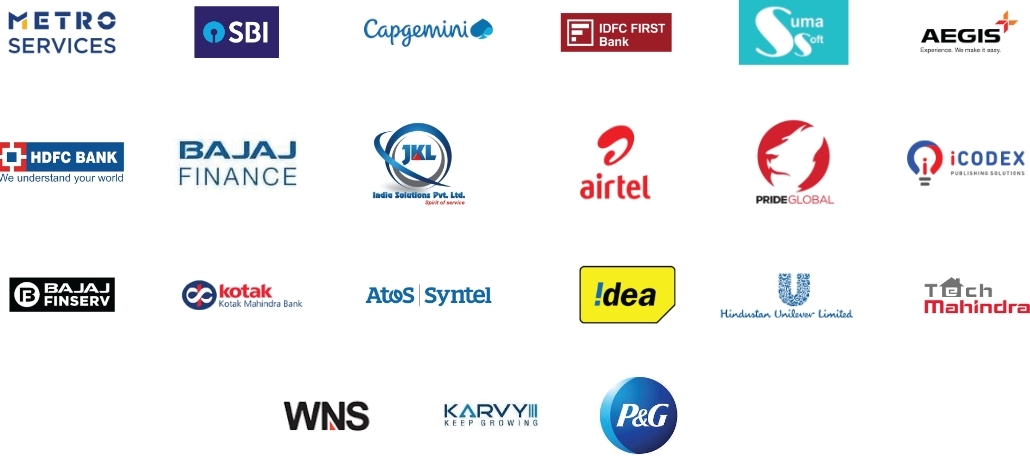
The goal of the Lighthouse program is not limited to finding jobs for young people but also for them to continue being employed.
Once the youth join a workplace, it is a time of great vulnerability. These new entrants into the formal sector are thrown into an alien culture. The world of work itself is new to them. Hence, post-placement mentoring and emotional support are critical. The team works with the employers too where possible, for effective integration of the youth.
Alumni also act as ambassadors of the program. They refer new students, hold sessions for current batches and participate actively in Lighthouse events. During the COVID lockdown, they acted as community champions and handled the food distribution work at the community level, managed the helpline calls and encouraged potential students to join the Lighthouse program online.
Alumni of the Lighthouse feel connected – there is a feeling of trust; a bond. Often, they are a peer-support group for each other.
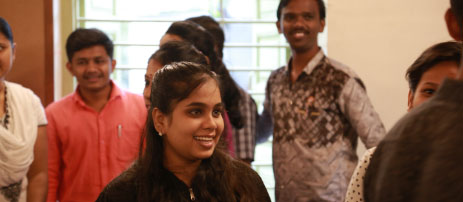
Outreach
The first step of the program is to reach out to youth and low-income communities. Home visits, relationship building with community leaders and working with Lighthouse alumni, are some outreach strategies. In addition, local Corporators promote the Lighthouse concept within their constituencies and PMC social workers support in spreading awareness in communities. Over 76% enrollments at the Lighthouse happen through references provided by Lighthouse alumni.
20% inflexion point The Lighthouse program has a strategy of enrolling over 20% households from each slum community because the belief is that 20% household penetration constitutes an inflection point for the culture, sense of possibility and ‘agency’ of the entire community to change. Accordingly, enrolment, skilling and placement statistics are tracked for every slum community.
We work with some of the most marginalized youth
59%
enrolments are women
ZERO
educational qualifications for entering the Lighthouse
81%
students are school dropouts/ 10th Pass/ 12th Pass
73%
of placed youth have never worked before
100%
youth are from low-income households and 60% live in slums/chawls/ villages
Rhythm
Once enrolled, students start with Rhythm- a program designed to awaken youths’ inner ‘Agency’ by creating a safe space that respects the unique context and strengths of each youth. The concept of having ‘Agency’ within oneself refers to the capacity of an individual to determine his/her future. Through the interplay of creative exercises, mindfulness practices, group challenges and learning from successful individuals; the Lighthouse youth start to see themselves in a new light.
Counselling
The two key aspects of the Counselling process are- a deep belief in a young person’s potential and ‘freedom of choice’.
The objective of career counselling at the Lighthouse is to help each young person find her/ his path to full potential. Having moved each student from a place of choicelessness to one of possibility through the Foundation Course, it would not make sense to offer limited options for vocational skilling. Rather, youth are encouraged to decide on the vocational skill of their choice.
Each student is equipped with three kinds of information in order to make this decision: an analysis of their aspirations and interest, an aptitude assessment, and market trends. This is done through 1-1 counselling sessions in which the student determines the meeting point of her/ his aspirations, talent and market reality.

Choice of Career for each youth is at the intersection of Interest, Aptitude and Market Reality
Foundation Course
This program is towards building workplace competencies through a conversational English curriculum and Digital Empowerment curriculum: A conversational English course that is a key workplace competency. The spoken English program is run in partnership with ‘Bindaas Bol’ to improve not only conversational skills in English but other soft skills required at the workplace.
A 20 hours digital empowerment curriculum that prepares youth with basic internet skills thereby enhancing their employability. Inhouse Digital facilitator will be engaged to deliver the online Digital Empowerment curriculum. The course enables youth to be internet savvy and have the necessary digital skills to confidently enter a work place.
Vocational Skilling
Being a collective action program, the Lighthouse has entered into partnerships with vocational skilling partners across the city, thus enabling wide choice. Till date, over 55 skilling courses have been held in partnership with 20+ skilling partners.
The Lighthouse team continues being in touch with students after they start their vocational skilling program. Attendance is tracked, as well as program quality. If and where required, conversations are held with the youth, their family or the skilling partner.
Skilling courses which are in high demand such as data entry/ accounting/ office administration/ fashion designing or beautician are held within the precincts of the Lighthouse. Other courses which have only a few students enrolling per batch are held at the location of the skilling partner.
Our 20+ skilling ecosystem partners

Placement
Pre-placement coaching, CV making, mock interviews and personal support during the entire interview process are important components of this stage. Family counselling is undertaken when it comes to accepting a job offer.
Two-thirds of the placements from the Lighthouse are generated through self-leads. This implies that youth feel empowered enough, after the Foundation course, to generate their own job leads. This is the best possible outcome because it sets-up a young person to be resourceful and take initiative at a later stage in life as well – which is what makes this a sustainable livelihood program.
Currently, the placement ecosystem comprises of 800+ organizations. Many of these are SMEs emanating from local economic opportunities. These enterprises are well-positioned to be the stepping stones that young people require to be able to make the transition from the informal to the formal sector
Some of our 800+ Placement partners

Alumini
The goal of the Lighthouse program is not limited to finding jobs for young people but also for them to continue being employed.
Once the youth join a workplace, it is a time of great vulnerability. These new entrants into the formal sector are thrown into an alien culture. The world of work itself is new to them. Hence, post-placement mentoring and emotional support are critical. The team works with the employers too where possible, for effective integration of the youth.
Alumni also act as ambassadors of the program. They refer new students, hold sessions for current batches and participate actively in Lighthouse events. During the COVID lockdown, they acted as community champions and handled the food distribution work at the community level, managed the helpline calls and encouraged potential students to join the Lighthouse program online.
Alumni of the Lighthouse feel connected – there is a feeling of trust; a bond. Often, they are a peer-support group for each other.

 Voices of Lighthouse Students and Alumni
Voices of Lighthouse Students and Alumni
Technology in the Lighthouse
Technology is leveraged for the administration of the Lighthouse, as well as to ensure that youth are better equipped for jobs, through familiarity with technology. Students learn via online courses and also complete a digital literacy program. The entire administration of the Lighthouse from outreach to enrolment and all the way up to placements and alumni management is mapped onto the ‘WeConnect’ technology platform. Impact across the city is assessed visually through Google Earth mapping.
Chairman, Dr. Ganesh Natarajan on how technology is leveraged in the Lighthouse.
What is unique about the Lighthouse?
Youth Centricity
The Lighthouse has an unwavering commitment to the best interest of each youth. Every single youth enrolling into the Lighthouse has an experience of deep personal care; even though many 1000s of youth are part of the program. The approach is to build a long term relationship based on trust, respect and deep listening, as opposed to a transactional approach that focuses primarily on the achievement of numbers.
The program design has in fact been crafted based on insights from youth. The fact that youth have limited self-beliefs are ‘stuck’ and often in despair, led to the creation of a joyful Foundation Course. Freedom of choice (of vocational skill) is embedded into the design because young citizens with low-income contexts need and aspire for freedom of choice, just like youth in other walks of life. In these and other ways, agency and wellbeing of youth are at the core of the Lighthouse culture and operations, every step of the way.
1 Youth Centricity
The Lighthouse has an unwavering commitment to the best interest of each youth. Every single youth enrolling into the Lighthouse has an experience of deep personal care; even though many 1000s of youth are part of the program. The approach is to build a long term relationship based on trust, respect and deep listening, as opposed to a transactional approach that focuses primarily on the achievement of numbers.
The program design has in fact been crafted based on insights from youth. The fact that youth have limited self-beliefs are ‘stuck’ and often in despair, led to the creation of a joyful Foundation Course. Freedom of choice (of vocational skill) is embedded into the design because young citizens with low-income contexts need and aspire for freedom of choice, just like youth in other walks of life. In these and other ways, agency and wellbeing of youth are at the core of the Lighthouse culture and operations, every step of the way.
2 Culture and values
Culture and Values
Perhaps the most important aspect of the Lighthouse is that it acts from the space of values. The values of PCC are Courage, Empathy, inclusion and Integrity. These values are role-modelled by the Lighthouse team, so as to enable the culture of a safe, inclusive, nurturing and vibrant space. It is a space where failures are looked at as stepping stones to success. A space where going for a job interview 20 times despite getting rejected the first 19 times is acknowledged as an act of great courage. A space where many young people who were earlier ridiculed for physical/ mental ‘shortcomings’ have experienced dignity and made friends for the first time in their lives. And also a place of reflection, honesty and self-awareness.
3 Space and light
For most students, the Lighthouse is their very first experience of a welcoming, sunlit and spacious space. Much has been written about the importance of supportive spaces, for mental and emotional health. Such spaces are essential to enable the opening up of possibilities, breaking mental barriers and expanding into one’s larger self.
All Lighthouses are spacious, with an area of 3000-5000 sq. ft. There are minimum 3 training rooms, a dedicated room “Khazana” to conduct the Foundation Course, a Counselling room and a ‘Katta’ which is a free space.
4 Mapping for city transformation
To achieve this, each and every slum community has to be impacted. How can this be ensured? We do this by rigorous tracking of coverage across the city. With the help of GIS mapping, the penetration of the Lighthouse program across the city is recorded on a regular basis. The distribution of enrollments provides direction as to where greater outreach efforts are required, as also, which communities are past the inflection point of 20% enrolment and hence ready for community-based work.
5 Collevtive action model
6 Thriving Public-Private-Partnership
PMC and PCC are the anchor partners of the Lighthouse model and in fact, the concept itself was co-created by the two entities. Apart from this partnership between PMC and PCC, there is a mirroring partnership between PCC and the corporate sector. Thus it has become a PPP with a unique business model where Capex is by ‘public’ and Opex by ‘private’.
While PMC provides the Lighthouse locations and capital expenditure towards renovation, refurbishment, and provision of technical equipment such as laptops, AR/ VR equipment and video walls, corporates provide operational expenditure and volunteering support towards the running of the Lighthouses.
Impact on Livelihood
33 Lighthouses
Lighthouse locations
Maharashtra:
PUNE: Aundh, Yerwada, Hadapsar, Warje, Bhawani Peth, Tingre Nagar, Wadgaon Sheri, Kothrud, Janta Vasahat, Kasba Peth, Wanowrie, Bibwewadi, Kondhwa
PIMIPRI CHINCHWAD: Pimpri, Nigdi, Chinchwad, Bhosari, Borhade Wadi
MUMBAI: Dombivli, Aurangabad, Ambivli, Mulund
Hyderabad: Chandanagar
Delhi: Matia Mahal, Kalkaji, Malkaganj
Odisha: Bhubaneswar, Barbil, Angul
Lucknow: Naka Hindola
CITY COVERAGE
350 out of 500 slum communities
of Pune, have youth enrolled into the Lighthouse
 ENROLMENTS
ENROLMENTS
32600 youth
enrolled till date
76%
enrolments happen through referrals
 EMPLOYABILITY
EMPLOYABILITY
20700
completed employability journey
 LIVELIHOOD/ EDUCATION
LIVELIHOOD/ EDUCATION
4,500 youth
moved to livelihood/education
3,750 youth +
placed in jobs/set up as entrepreneurs
750 youth
enrolled in further education
 PLACEMENT SUSTAINABILITY
PLACEMENT SUSTAINABILITY
63% of youth
placed are still working, one year after joining*
Voices of the Ecosystem
Voices of the Ecosystem
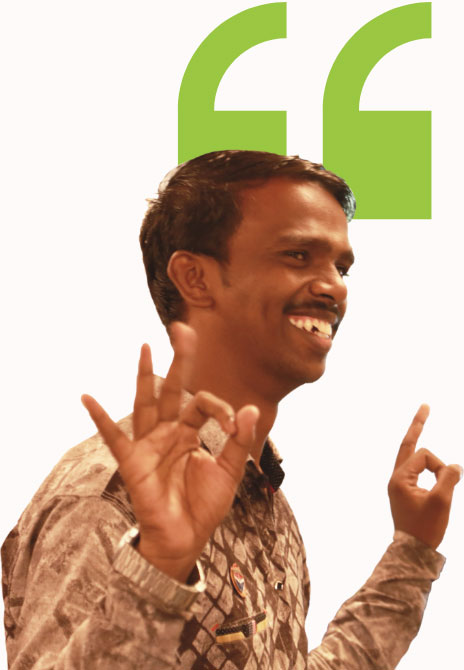
Some of Our Partners

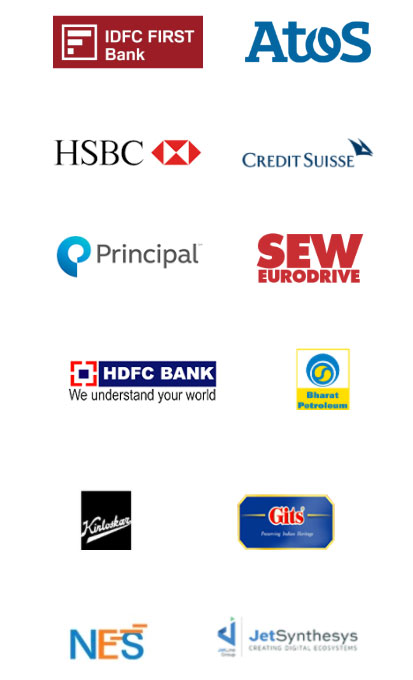
THE LIGHTHOUSE VIDEO TOUR
This virtual tour takes you through the Lighthouse
model and its impact. Also hear from some of the
Lighthouse partners!
Donate or Get Involved
